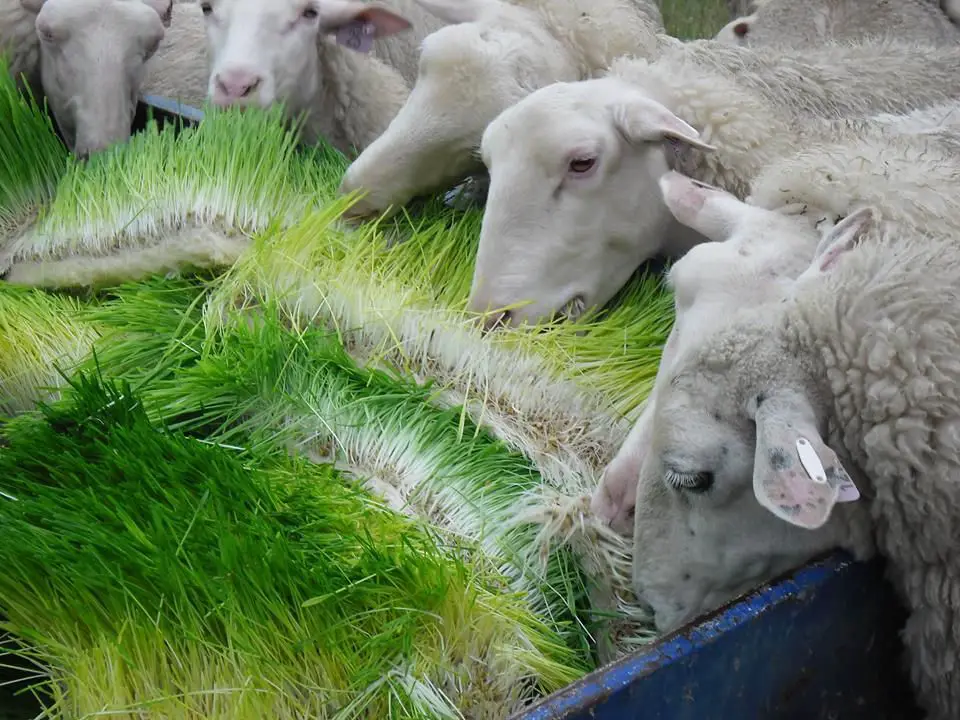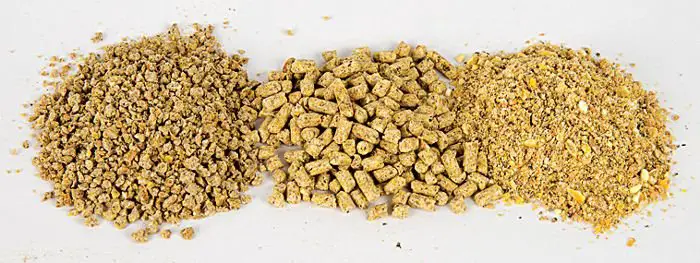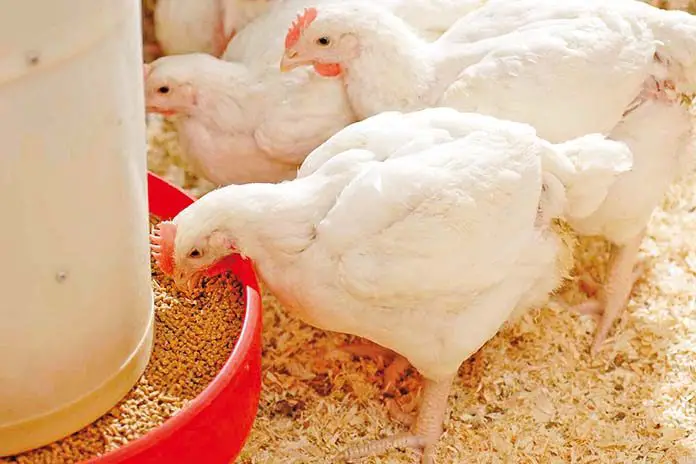Barley is a cereal grain mostly associated with beer brewing, it was one of the first cereals to be domesticated by man, and an estimated 150 million tons of barley is produced every year. However, of the bulk of barley produced worldwide about 65% of it is used for animal feeding as an energy source. Very little barley is used for human consumption mainly due to its high fiber content, which makes it unpalatable in large quantities, but some specialized bread contains barley in moderate amounts. The high fiber and carbohydrate content of barley make it ideal for feeding sheep as these ruminants benefit from this combination giving good growth gains. Barley has a very comparable feeding value to that of maize and corn the dominant grain in animal feeding.
Contents
Feeding Barley to Sheep
Barley can be fed to sheep of all classes and ages as an energy and protein source, especially in situations where high performance is required. The question is whether to feed barley to sheep whole or processed the simple answer is both. There are several ways to process barley for sheep feeding, namely rolling, crushing, and flaking using dry or wet heat. For sheep, the whole plant can be used as feed so we will discuss barley grain, forage, and the by-products separately. Barley grain is an energy-dense feed with over 60% starch although this is lower than both maize and wheat it is still a significant amount that care should be taken when feeding barley to sheep. Barley is suitable for feeding to sheep because it has a higher fiber content than both maize and wheat. This attribute helps maintain normal digestive function in sheep, together with a good vitamin A and E content.
How Much Barley to Feed Sheep?
Grain overload or acidosis is a condition in sheep that have been fed an excess of barley or any high starch feed. As mentioned before barley has a crude fiber content of 6% which is good for sheep as they need fiber for the normal function of the rumen. However, in instances where barley makes up more than 40% of the diet cases of acidosis and bloating can arise. This is due to the rapid digestion of the starch in the rumen upsetting the normal balance of rumen bacteria. Barley should be introduced slowly to sheep starting at 50 grams per animal per day gradually moving to higher amounts as required. Processing can also make the grain much easier to digest leading to bloating versus when the grain is fed whole and the sheep have more time to chew the grain. Chewing allows the grain to mix well with saliva which acts as a buffer in the rumen reducing acidosis. Other processing methods involving both wet and dry heat have been shown to reduce incidences of bloating rather than make the issue worse compared to grinding.
Barley grain harvested in wet conditions or stored improperly can become moldy which results in a build-up of mycotoxins in the grain. If this grain is fed to pregnant sheep, there can be challenges with fetus abortions which can lead to significant losses in productivity.
Sheep fed on barley or any other grain should always be monitored for signs of acidosis and fed roughage and fresh water always to avoid stock losses due to bloating which is a serious condition in sheep if not treated well and quickly.
Barley Forage for Sheep
Sheep can be fed barley forage in the form of silage, grazing, hay, and straw depending on requirements and availability. Barley can be sown for pastures and grazed young before flowering or harvested at the soft dough stage to make silage. In most cases however sheep are feed barley straw after the grain has been harvested. Barley straw is, however, very difficult to digest hence where performance is required the straw is treated with ammonia or urea. Barley straw treated with urea can be fed to growing sheep as the sole diet with good results as the urea provides protein for the rumen bacteria to multiply and digest the fiber in the straw.
Barley By-Products for Sheep Feeding
Barley grain is used mostly in the production of barley malt for alcohol production producing several by-products that can be used to feed sheep. The most common by-product of alcohol production is distillers’ grains which can be fed dry or wet to sheep with very good results as a protein and energy supplement. Barley distillers grains can have between 24 to 36% crude protein which is very good for feeding growing sheep. Other by-products from malting and alcohol fermentation, like malt culms, pot aye syrup, and draff can also be fed to sheep although mostly in small amounts.
Can Sheep Eat Clover?
Clovers are legumes that are useful for feeding sheep in pastures grown together with cereal or grass species. Clovers are rich in protein and energy and have been shown to reduce the feeding costs of all classes of sheep raised on pasture. However, clover can cause pasture bloat when fed in excess and with limited fiber hence sheep fed on clover need to have access to hay always to provide fiber.
Can Sheep Eat Horse Feed?
Horse and sheep feed in some cases has similar protein, fiber, and energy specifications and hence sheep can eat horse feed. Horses although not ruminants can digest high-fiber feed like sheep which is the reason why their feeds have some similarities. However, care should be taken when feeding medicated horse feed to sheep as some medications or dosages might not be ideal for sheep potentially harming them.
Conclusion
Sheep can eat barley both the grain and forage with very good results as a source of starch and fiber for the sheep. The grain has a good balance of energy and starch which makes it safe to feed at higher amounts than other cereals without causing any digestive issues like bloating and acidosis. Barley forage harvested young has a good palatability however the straw is tough and needs processing in order for it to be digested efficiently.




